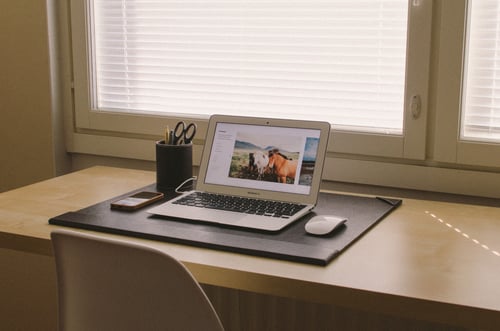Building a bespoke website design can be a difficult proposition. You’ve got to juggle the expectations of everyone involved, such as sales and marketing as well as considering the customer’s user experience. With so many moving wheels, it’s easy to get stuck, and wind up lost in the process.
Fortunately, we are here to help you keep control and build the website that your organisation deserves with these 10 top tips:
1) Do art samples in black and white before going to colour
By starting in black and white, then moving to colour, you make it easier to focus on the things that really matter. It also helps to build a final product that will focus on form rather than what everyone else is telling you to focus on.
2) Use a simple program like Keynote or PowerPoint to build sample websites quickly
It’s easy to think that every work sample you do needs to be a work of art built in Photoshop, but all that does is give you an extra mountain of work. We like Keynote (that’s Apple’s version of PowerPoint) to create quick samples in a hurry, but there are tons of other web tools that can be used as well. There’s even an online repository containing templates for applications, mobile and more in Keynote.
3) Make all of your fonts universal
It sounds silly, but it looks really, really bad if you have one paragraph in Arial, and another in Calibri. Take the time to make sure that all of your documents have a universal style. Make sure that everyone who builds web content knows what the fonts are so that the company message is uniform. Google Fonts is a good place to start looking for the font that is right for you. While you are at it, making fonts larger is a good idea as they make for an easier to read page.
5) Leave the image carousel at the carnival
Few web visitors – if any – actually stick around to see a full image slideshow or carousel, leaving content that your users just won’t see. Focus on what is important – especially for a first time visitor – and leave the rest for other pages of the website. If you sell widgets and all of your profit and margin comes from the widgets, let the widgets be front and centre
6) Make the website user friendly
Making a stimulating website with bright colours and stuff everywhere is tempting; especially if you are letting others call the shots. But if it’s too complex it could just scare users away. Toss out excessive menus and lists, and make it easier by cutting links in the header or sidebar of your page. You also don’t want to squeeze everything “under the fold”, even if you have blank space. There is nothing wrong with having empty space if it looks tasteful and uncluttered. Speaking of sidebars…

7) Lose the sidebars
Anything that distracts from the main course is a problem. Unless you have a very, very specific reason to not focus on the centre of your page, you are going to want to focus on the centre of your page. Sidebars only hurt in that department.
8) Colouring ideas
You made your website black and white, and we need colour back eventually. Think of colours that will make your website pop and attract attention. If nothing is coming up, look at what nature gives you – just take a picture of a pretty natural image and try to get the essence of that.
9) Walk away from the computer
Computers are very important to bespoke website design but they aren’t everything. Don’t be afraid to prepare ideas on a whiteboard, especially during meetings. It’s a lot easier for others to write in their comments that way. Need to refocus when you get back? Try squinting - your vision will get blurry and only the most attracting elements will be easy to see. Hopefully they are what you wanted to focus on.
10) Need ideas or want to manage them? Pinterest can help!
The last of our 10 top tips to improve your bespoke website design skills fast is free resources. By using mood boards of favourite images, colours and so on, you will have a place to keep things organised for your current project as well as future endeavours. You can also look to the Pinterest community to see what other ideas designers have.
Hopefully these top tips will help you improve your bespoke website design skills and complete that web project for your team! For your next steps, download your guide below to effective web design and get up to date on the latest features and important elements for your next web build.










